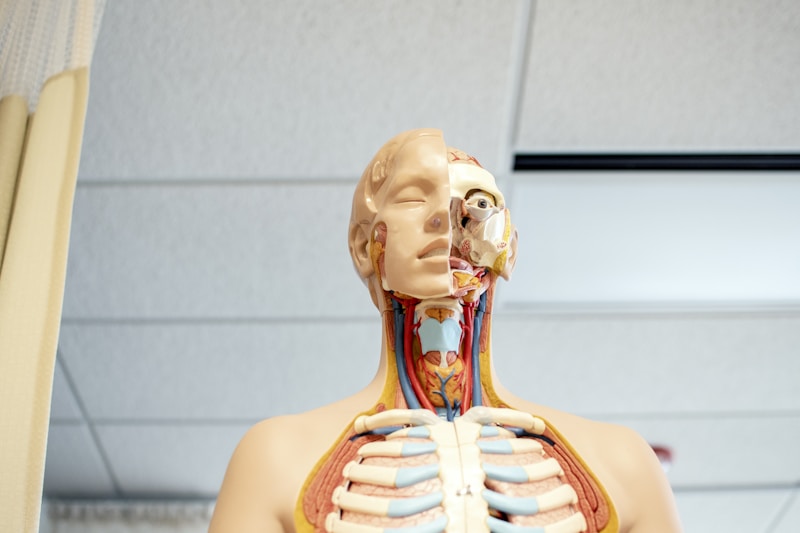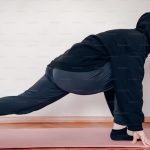As yoga teachers we are always on the look out for flared lower ribs in our students. But do you really know what causes that hollowing of the upper abdomen and jutting ribs? I know I didn’t when I first started teaching yoga. Here’s why it happens and what you can do about it in your classes.
What Exactly are Flared Ribs?
It’s a really common verbal cue to lift the sternum and widen the collar bones in standing poses and back bends. What we really want here is for the student to broaden their upper chest and extend the thoracic spine a little hence gaining a lift of the sternum. But that is not always what happens is it?
Students find the correct combination of actions really hard for a range of reasons that all result in the body looking elsewhere for compensatory movement. The usual story is that the lumbar spine comes to the rescue by increasing its lordosis. This increase in lumbar extension lifts the whole rib cage up and back making the student think that they have lifted their sternum as instructed. As this happens, the abdominal wall is stretched and the abdominal muscles are drawn under the clearly visible costal margin giving the characteristic flare that we know so well.
See Also: Yoga’s So Good For Back Pain, It Should Be Prescribed!
The Root of the Problem
The ribs have a tendency to flare in a range of asana but what actually causes the problem?
- Lack of thoracic extension — This could be due to stiffness or simply that the body has forgotten how to isolate that movement.
- Lumbar extension ‘give’ — Instead of each area of the spine doing it’s fair share of the work there is one place in the lumbar spine that tends to ‘hinge’ into extension. You can often see this as a crease across the lower back in back bends and can be the site of back pain. Because this area moves so easily the body uses it to compensate for any lack of movement in the joints above or below.
- Poor core engagement — Either through general weakness or lack of abdominal engagement in back bends and asymmetric standing poses like Warrior 1 and Crescent Lunges. The bottom line here is that there is simply not enough core strength to maintain good lumbar spine alignment.
- Tight shoulders — The whole ribcage is drawn up when the arms are lifted overhead. Once again it is usually the lumbar spine that arches here.
- Tight hip flexors — These muscles are attached onto the lumbar vertebrae and can draw the spine into an increased lordosis when the hip extends.
Banish the Flare
There are a few strategies that you can employ to avoid this common error and many students will need a combination of approaches to achieve good alignment with the correct core engagement. The bottom line is simple. All you need to do is stretch what is short and strengthen what is weak. But how can you go this?
- Core, core, core — Build lots of abdominal work into classes. Poses like Plank, Side Plank, pulsing from Down Dog to Plank a few times and Three Legged Dog are some of my favourites.
- Length in the spine — Cueing the tailbone towards the floor as the crown of the head grows tall in standing poses.
- Avoid hinges — Do not allow students to hinge in their lower back.
- Bandhas — Engaging mula and uddiyana bandhas will activate the muscles of the core that stabilize the lumber spine in a good position.
- Engage abdominals — Squeezing the abdominal enough to prevent the ribs drawing up and away from the pelvis.
- Modify arm positions — Where the shoulders are tight, encourage students to only lift the arms as high as is comfortable. Adopting cactus arms or tucking the thumbs in the armpits rather than lifting the arms overhead can be really useful.
- Stretch shoulders — Cow Face arms, prasarita padottanasana C and Childs Pose with the palms together behind the neck are really nice ways to stretch the shoulders in preparation for moving above shoulder height comfortably.
- Stretch hip flexors — Tight hip flexors can pull the lumbar spine into excessive extension in lunge poses like Warrior 1 and Crescent Lunge. Engaging the glutes on the back leg as well as the abdominals here really helps to relax the hip flexors and reduce the tendency to fall into excessive lumbar extension.
Keep an Eye on Those Lower Ribs
Students will always try their hardest to achieve the full expression of a pose and they are often unaware that they are using trick movements to get there. It can be so hard to get keen beginners to accept that quality is what they should strive for and that sometimes less is more.
Lots of modifications and a good foundation of abdominal strength with appropriate core control is the name of the game. Without this, repeated flaring of the ribs over months or years carries a real risk of injury. Yoga teachers have a responsibility to do good, not harm. Resolve to banish flared ribs and protect your students spines.













